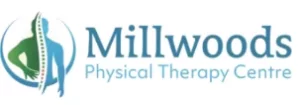


High-energy sound waves are used in the non-invasive medical procedure known as shockwave therapy to encourage the body’s natural healing and repair processes. It is additionally referred to as extracorporeal shockwave therapy (ESWT) and is frequently used to treat musculoskeletal disorders like plantar fasciitis, tendinitis, and tennis elbow.
The therapist will employ a device to deliver brief, strong pulses of sound waves to the injured area during a shockwave therapy session. Sound waves enter the bones and muscles beneath through the skin and other soft tissues. Enhancing blood flow, encouraging tissue regeneration, and lowering pain and inflammation, promotes the body’s natural healing process.
Shockwave therapy in Edmonton is frequently utilized as an alternative to more invasive procedures like surgery because it is seen to be a safe and effective treatment option for many musculoskeletal disorders. It is crucial to speak with a healthcare professional to find out if it is appropriate for you because, like any medical treatment, it may not be appropriate for everyone.
Shockwave therapy can help with plantar fasciitis, a common condition that causes discomfort in the heel and sole, by reducing pain and inflammation.
Shockwave therapy is beneficial in treating tendinitis, which can affect the shoulder, elbow, wrist, hip, knee, and ankle, among other places. Tendon inflammation and discomfort are two features of this illness.
Tennis elbows: Shockwave therapy services in Edmonton can aid in reducing elbow discomfort and inflammation brought on by overuse or injuries like tennis elbows.
Golfers elbow: Golfers elbow, which is similar to tennis elbow but affects the inner side of the elbow, can also be effectively treated using shockwave therapy.
Frozen shoulder is a disorder that causes stiffness and pain in the shoulder joint. Shockwave therapy can assist in increasing the range of motion and reducing pain and inflammation associated with a frozen shoulder.
Shin splints are a common condition that affects runners and other athletes. Shockwave therapy can help relieve discomfort and inflammation in the lower leg associated with shin splints.
Shockwave therapy Edmonton can be used to treat persistent neck and back pain brought on by ailments like spinal stenosis, herniated discs, and degenerative disc disease.
Shockwave therapy may not be appropriate for everyone, so you should speak with a healthcare professional to find out if it is the best course of action for your particular condition.
Non-invasive: Surgery or injections, which can be more intrusive and have a longer recovery period, are not necessary with shockwave therapy.
Quick and efficient: Depending on the severity of the problem, shockwave therapy is a reasonably short treatment that can be finished in a few sessions. Moreover, it can be quite successful at lessening discomfort, enhancing range of motion, and encouraging recovery.
There is no downtime after shockwave therapy, unlike after surgery or other invasive procedures. Usually, patients can resume their regular activities right away after the procedure.
Shockwave therapy can help reduce pain and inflammation, which can lessen the need for pain medication and other pain relief measures.
The following can be anticipated during a treatment session with shockwave therapy:
Depending on the area being treated, the patient could be required to change into a gown or wear loose-fitting clothing. Before the treatment starts, the treatment area will also be cleansed and prepared.
Gel application: The skin above the treatment region will be covered in a gel. This lessens friction and improves the efficiency with which sound waves enter the skin.
Shockwave administration: The therapist will apply shockwaves to the injured area using a specific device. To cover the entire area, the gadget is often moved circularly while being kept against the skin.
Treatment time: Depending on the area being treated and the severity of the ailment, a treatment session normally lasts 10 to 20 minutes.
Patients may notice a faint tapping or vibrating feeling during the course of the procedure, and some may feel mild to moderate discomfort or agony. Nonetheless, this is typically tolerated well and can, if necessary, be treated with over-the-counter painkillers.
Aftercare: The patient can resume regular activities right after the following treatment. Nonetheless, it is advised to refrain from demanding work or heavy lifting for at least 24 to 48 hours after the procedure. To aid in healing and increase the efficacy of the therapy, the therapist may also suggest stretching or other activities.
Many musculoskeletal disorders, such as plantar fasciitis, tendinitis, tennis elbow, frozen shoulder, and persistent neck and back pain, can be treated using shockwave therapy.
During the therapy, patients may feel some mild to moderate discomfort or pain, but this is typically well-tolerated and can be controlled with over-the-counter pain medication, if necessary.
The type of ailment being treated and the intensity of the symptoms will determine how many shockwave therapy sessions are necessary. Patients often need 3–6 treatments spaced out over a few weeks.
Shockwave therapy is a quick, efficient, non-invasive treatment option that can help patients with musculoskeletal problems live better lives by reducing pain, promoting healing, and increasing mobility.
Patients who have tried various therapies without success or who want to stay away from surgery or injections may benefit from shockwave therapy. But, it's crucial to speak with a medical professional to ascertain whether shockwave therapy is the best course of action for your particular situation.
Chiropractors must keep records of your care and treatment as part of continuous treatment. These notes are kept confidential and safe. The patient may ask that a copy be given to them or to any other suitable healthcare provider. To discover how we can offer you relief, be sure to get in touch with us right now!
Shockwave therapy's most frequent adverse effect is mild to moderate pain or discomfort at the treatment site, which normally goes away in a few days. Serious adverse effects are uncommon, though.
After the initial treatment, patients may begin to experience the effects of shockwave therapy, but it may take multiple sessions to experience all of the therapeutic advantages.
Some insurance policies might pay for shockwave therapy, so it's vital to check with your insurance company to see if it's covered by your plan.
Make an appointment with Creekwood Physiotherapy to discover if you are a candidate for shockwave therapy if you are in pain due to an injury and are located in Edmonton, Alberta.




Reclaim Your Body, Recharge Your Life.
Join the Physiotherapy Revolution!